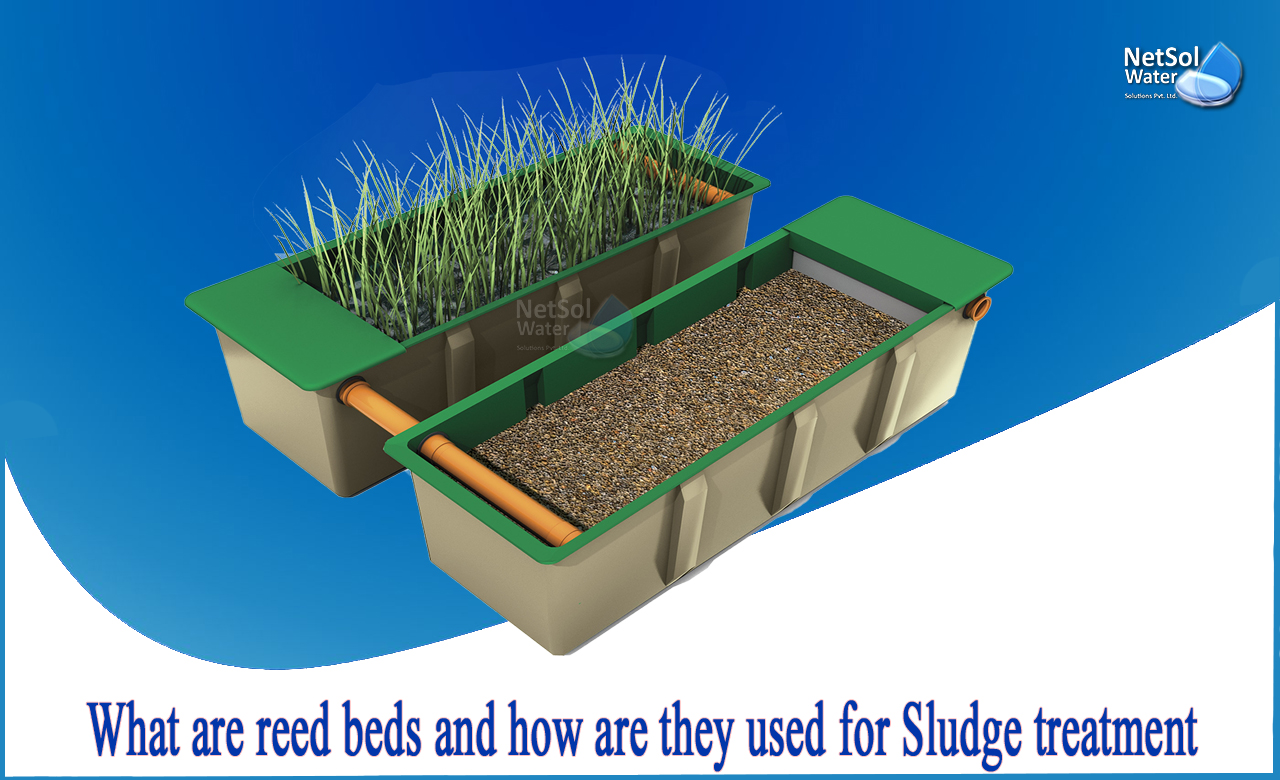What are reed beds and how are they used for Sludge treatment?
Decentralized wastewater treatment utilizing septic tanks as pre-treatment is popular in developing nations' urban and peri-urban settings. Handling and using produced sludge is one of the challenges of decentralized wastewater treatment systems.
Sludge treatment reed beds (STRBs) are a reliable technique for sludge dewatering and stabilization. These require more space than most other sludge treatment solutions but have low operational and energy costs. The amount of land required for STRBs can be reduced by choosing an appropriate loading rate, sludge application frequency, and resting phase.
What are reed beds?
A reedbed is a type of natural habitat that can be found in floodplains, waterlogged depressions, and estuaries. Reedbeds form part of a succession that begins with young reeds colonizing open water or wet land and progresses through a gradation of progressively dry ground. As reedbeds mature, they accumulate a substantial litter layer that eventually rises above the water surface, providing chances for shrubland or forest invasion.
Sludge treatment reed beds
STRBs are an intriguing sludge treatment option for communities searching for alternatives to conventional sludge dewatering systems, and they may be employed as a sludge treatment method at both local and big centralized treatment facilities. When appropriately scaled and built, these are successful at increasing the dry matter content of the sludge, hence reducing overall sludge volume, while also producing a safe, high-quality end-product that is frequently acceptable for application to green areas or arable land.These units are made up of three similar beds, each with a surface area of 1.5 mx0.7 m and a depth of 1m.
How are these STRBs constructed?
STRBs are often constructed as ground objects with horizontal layers of gravel and sand, with reed as the predominant plant. It is critical to have a drainage system that is linked to the ventilation chimneys. This prevents anaerobic conditions from forming and ensures optimum sludge dewatering and stabilization conditions. There are three phases to the operation of STRBs (commissioning, full operation and emptying). The dose of dry matter of sludge should be lower than intended values during the initial commissioning period (which lasts about 2 years).
During operation, sewage sludge with low dry matter content is irrigated on a regular basis (from 0.5 percent to 1.5 percent). Resting intervals (breaks in sludge delivery) might last several days, depending on weather conditions, system age, sludge dry matter concentration, and accumulated sludge thickness. Before emptying the bed, let it empty for a while (ideally in the summer) to enhance the dry matter content and improve sanitary characteristics.
Life Expectancy of Reed-Beds
Reed beds are not a permanent solution. They are a relatively new concept, and even when correctly planned and maintained, they will only be sustainable for 7 to 10 years following a full treatment plant as a last polishing filter.
System maintenance and replacement
Reed bed systems are not low-maintenance, and they require a regular maintenance schedule to function effectively. The reed beds that function are generally ones whose owners enjoy gardening. STRBs are an environmentally friendly method for sewage sludge treatment. Sludge Treatment Reed Beds are a low-energy, low-cost option for minimizing sludge generation through combined dewatering and stabilizing procedures.
What do we offer?
Netsol Water is a renowned producer of water and wastewater treatment plants. We are the most demanding organization in the industry. We have a reputation for being the top commercial RO plant manufacturer, industrial RO plant manufacturer, sewage treatment plant manufacturer, and effluent treatment plant manufacturer, among other services. Aside from that, our USP is 24x7 customer assistance.
For further assistance, inquiry or product-purchase-related questions, give us a call on +91-9650608473 or email at enquiry@netsolwater.com.



